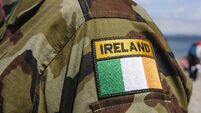Smallest baby to undergo robotic surgery recovering
Amber Vairo has grown two inches and gained nearly a pound, and the three tiny scars on her stomach have all but vanished – along with any doubts she would survive a complex surgery to fix a life-threatening condition.
Last month, at just 5.6-pounds and six days after birth, Amber became the smallest patient in the world to undergo robotic surgery of any kind, said her doctors at the University of Iowa Hospital and Clinics.














